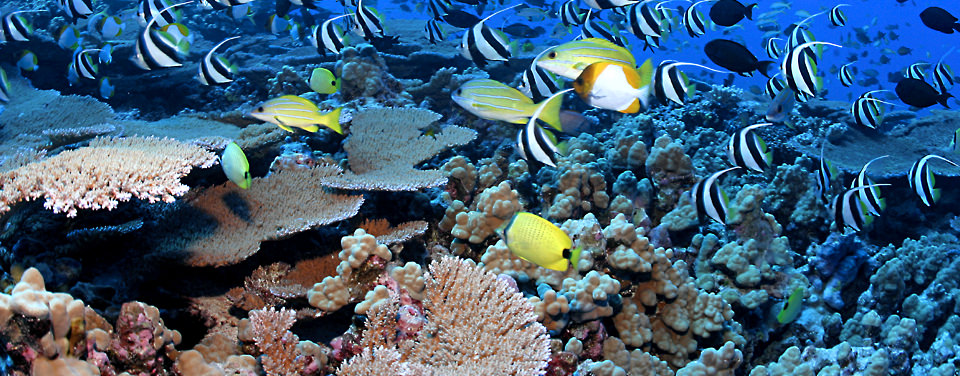What are the three main types of coral reefs?
The three main types of coral reefs are fringing, barrier, and atoll.

Schools of colorful pennantfish, pyramid, and milletseed butterflyfish live on an atoll reef in the Northwestern Hawaiian Islands.
The most common type of reef is the fringing reef. This type of reef grows seaward directly from the shore. They form borders along the shoreline and surrounding islands.
When a fringing reef continues to grow upward from a volcanic island that has sunk entirely below sea level, an atoll is formed. Atolls are usually circular or oval in shape, with an open lagoon in the center.
Barrier reefs are similar to fringing reefs in that they also border a shoreline; however, instead of growing directly out from the shore, they are separated from land by an expanse of water. This creates a lagoon of open, often deep water between the reef and the shore.
Coral reefs are important because they bring in billions of dollars to our economy through tourism, protect coastal homes from storms, support promising medical treatments, and provide a home for millions of aquatic species.
NOAA’s Coral Reef Conservation Program works to protect coral reefs through research, education, and preservation programs. Many reefs, such as the Virgin Islands Coral Reef National Monument, are housed in NOAA’s system of marine protected areas.